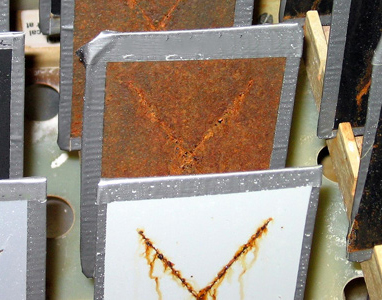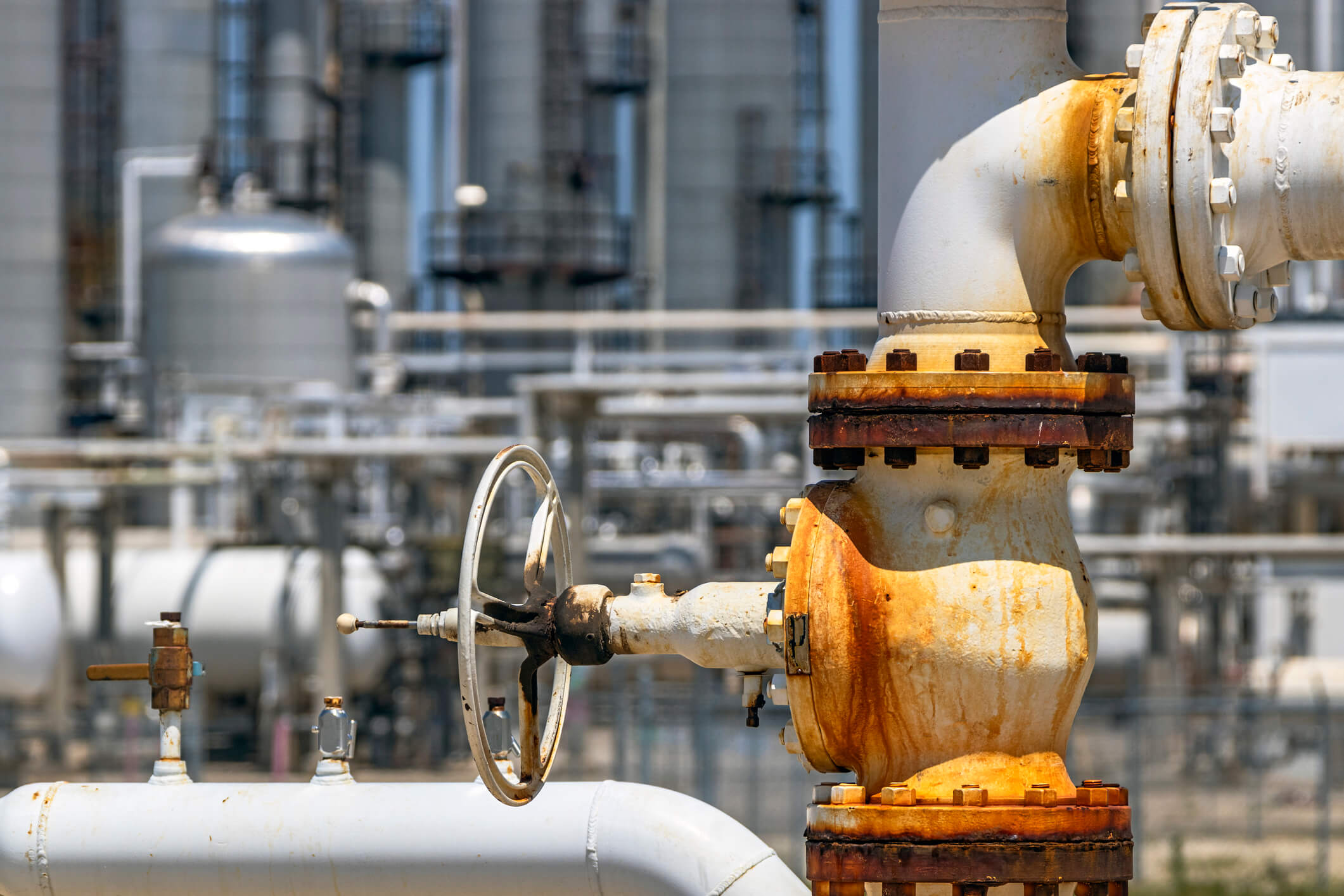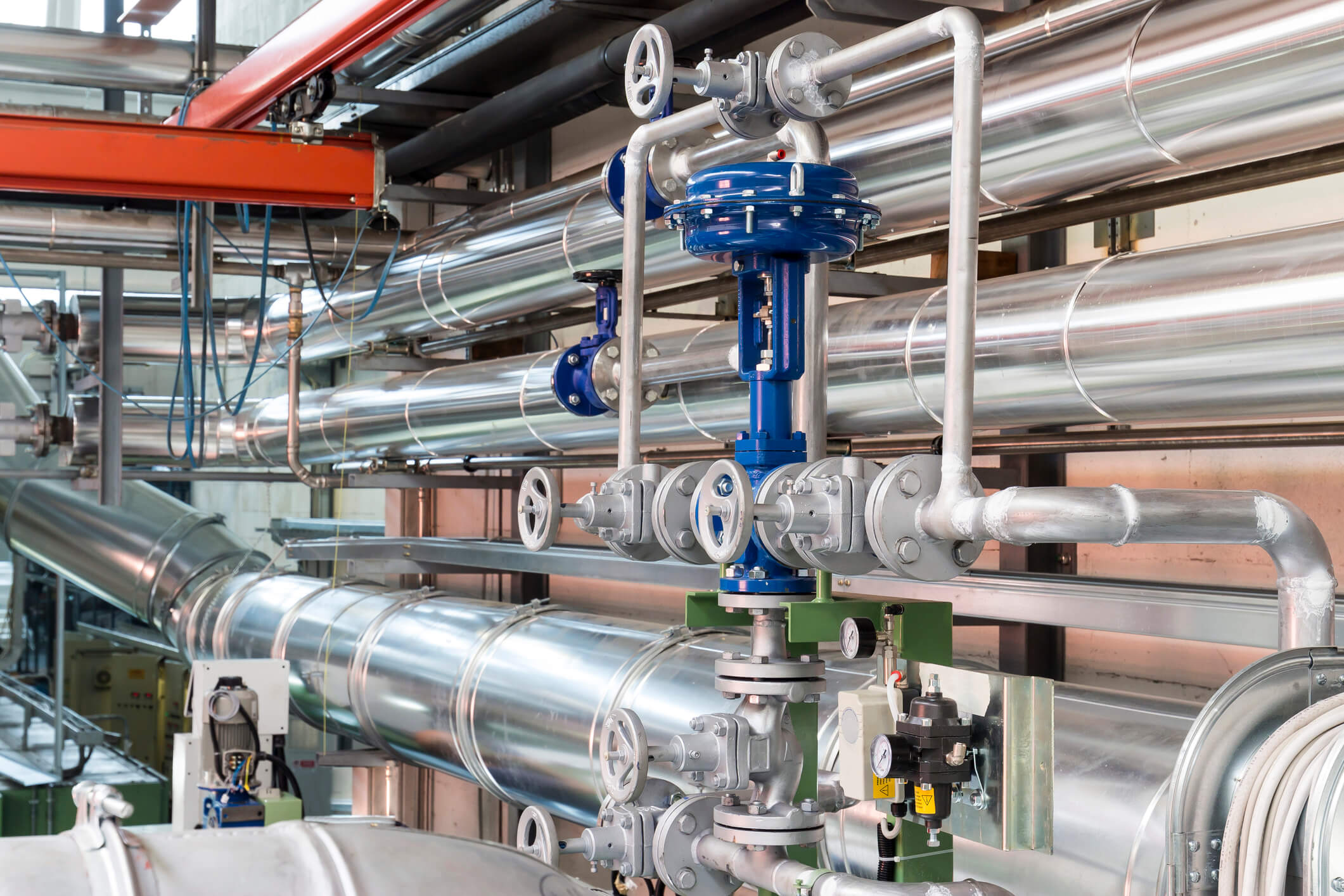Corrosion coupons are pre-weighed and measured metal strips which are mounted in a special pipe system called a coupon rack. They are used to estimate the rate of metal corrosion by comparing the initial weight with the weight following 60, 90 or 120 days of exposure to the water in the system. Corrosion coupons are available in a wide variety of materials to assess corrosion in all types of systems.


Corrosion coupons are installed in a system with the intention of predicting the corrosion rate for the entire system. The obvious flaw with this reasoning is that the flow and temperature through a corrosion coupon rack will never duplicate the corrosion forces elsewhere in most systems. There is little effect on the coupon by temperature which would typically be a severe corrosive effect in actuality.
The most reliable indication of corrosion in the concentration of the total iron in the recirculating water. Even so, many facilities require coupon studies and below is the detailed procedure for installing and monitoring coupons.

Corrosion coupon analysis involves a number of variables which may significantly affect the results of the analysis. Make sure the design of the system and the installation of the coupon rack will produce accurate test results.
Before installing the coupons, complete the information on the coupon package. Turn off the system and carefully mount the coupons on the holder arms. Use a paper or cloth towel to prevent the oils on your skin from impacting the results. Once installed, turn the flow to the rack back on and adjust the flow rate to 3-5 fps. Maintain constant flow throughout the study. Store the coupon envelopes in the controller or in a dry place near the coupon rack.
Remove the coupons after 60, 90 or 120 days as specified by the study. Carefully remove and dry each coupon on a paper towel. Take care not to remove material deposited on the coupon because deposits are an important part of the evaluation. Place the coupon into the original envelope without the plastic bag. Record the date of removal and send the coupon back to the Chardon Technical Support Laboratory as soon as possible.
The results of the corrosion coupon analysis will be presented on a Laboratory Report for and include a written analysis, a photograph of the coupon, and a corrosion rate in mills per year, or mpy. Use the table below to evaluate the results from your study.


At Chardon Labs, we aim to help our customers reduce operating and maintenance costs, achieving optimal water system performance and longevity. Whether you use a cooling tower, closed loop system or boiler, we can customize a water treatment program to your facility’s needs.
If you’d like to learn more about our solutions or request a free quote, fill out our contact form today. One of our water treatment consultants will be in touch.